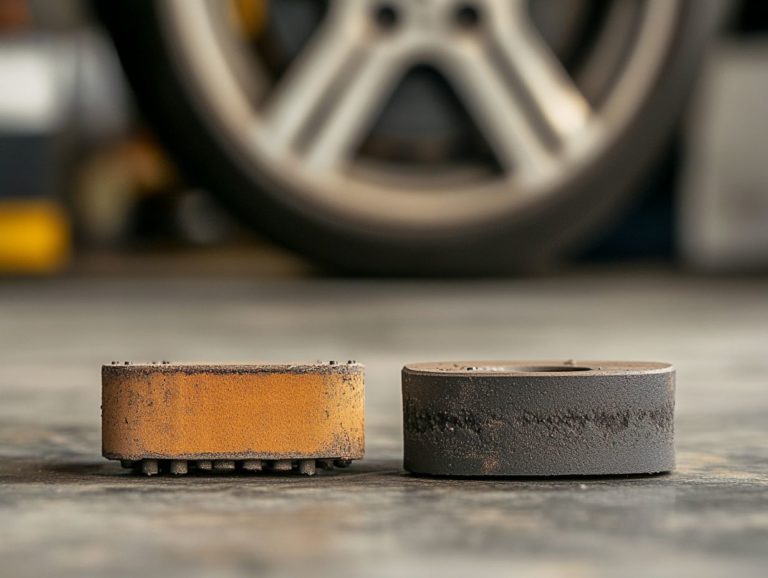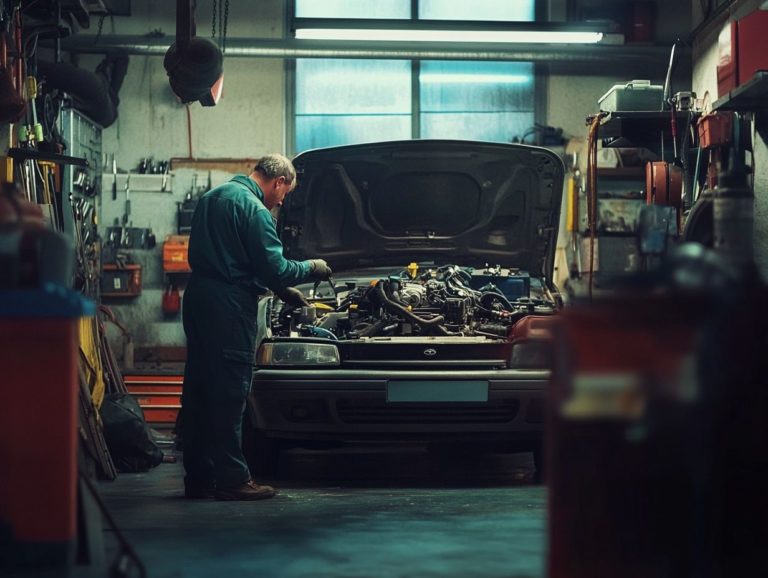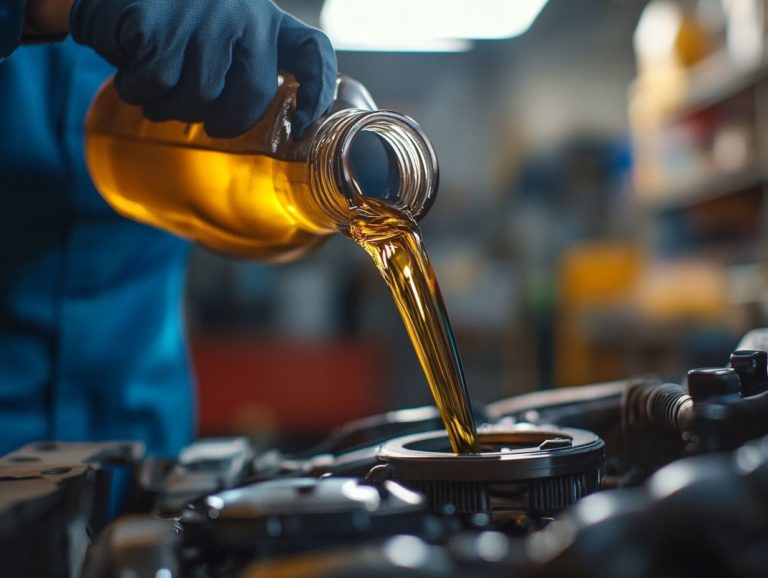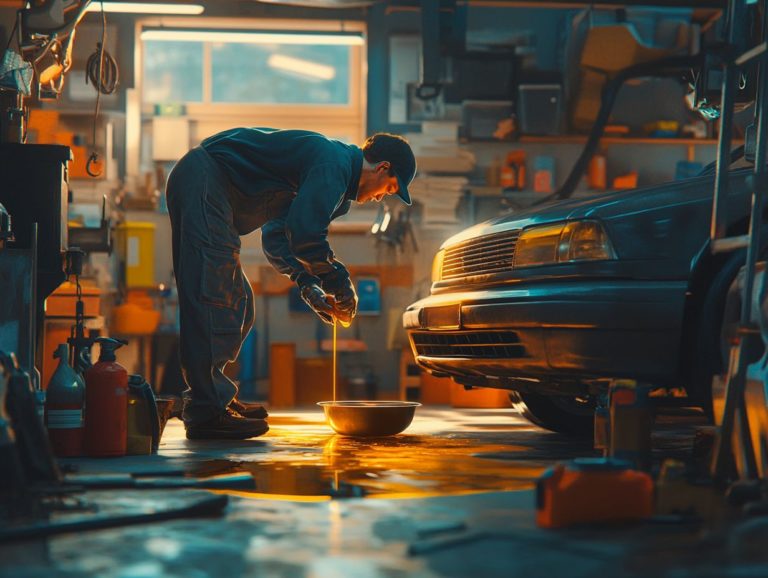How to Maintain Your Vehicle’s Cooling System?
Your vehicle s cooling system is vital for maintaining the smooth and efficient operation of your engine. Understanding its components and functions is essential for preventing costly repairs and ensuring optimal performance.
This guide delves into the common signs of cooling system issues, outlines essential maintenance tasks, and provides tips for keeping your system in peak condition.
Whether you re an experienced car owner or just starting your driving journey, this information will empower you to master the essentials of cooling system care.
Contents
- Key Takeaways:
- Understanding Your Vehicle’s Cooling System
- Signs of Cooling System Problems
- Maintaining Your Vehicle’s Cooling System
- Preventing Cooling System Issues
- Frequently Asked Questions
- What is a vehicle’s cooling system and why is it important to maintain?
- How often should I have my vehicle’s cooling system checked?
- What are some signs that indicate my vehicle’s cooling system needs maintenance?
- Can I maintain my vehicle’s cooling system myself?
- What happens if I neglect my vehicle’s cooling system?
- How can I prolong the life of my vehicle’s cooling system?
Key Takeaways:
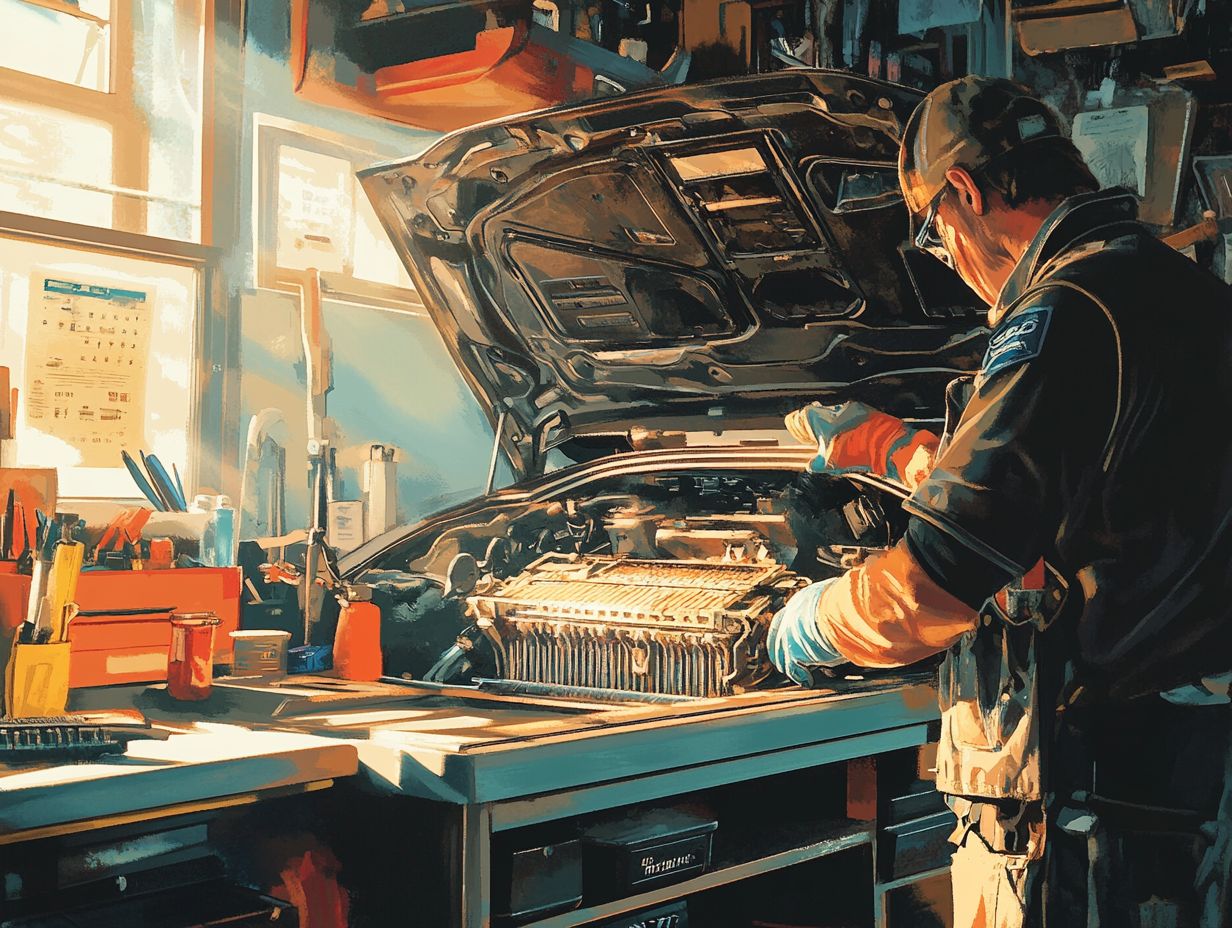
- Be proactive about regular maintenance to keep your vehicle’s cooling system running smoothly. Don t overlook tasks like checking fluid levels and changing filters to prevent potential issues.
- Watch for signs of cooling system problems, such as overheating or leaking fluids. Addressing these issues early can save you from costly repairs down the road.
- While you can handle some maintenance tasks at home, know when to seek professional help. A certified mechanic can diagnose and address complex cooling system issues to keep your vehicle running efficiently.
Understanding Your Vehicle’s Cooling System
Knowing how your vehicle’s cooling system works is key to keeping your engine running smoothly in extreme weather. A functioning cooling system helps regulate engine temperature through key components such as the radiator, water pump, and coolant.
Prioritizing regular maintenance and inspections can effectively prevent overheating, leaks, and other potential issues that could jeopardize your vehicle s capabilities and lead to costly repairs. Check coolant levels and inspect critical components like temperature gauges and radiator caps to ensure everything operates seamlessly.
Components and Functions
The cooling system includes essential parts like the radiator, water pump, and thermostat, which regulate your engine’s temperature and prevent overheating.
These elements work together to ensure your engine operates efficiently at its optimal temperature. The radiator dissipates heat by transferring it away from the engine coolant, thanks to the water pump. The thermostat, a device that helps manage the engine’s temperature, monitors coolant temperature and controls its flow to ensure the engine warms up quickly while also preventing overheating.
If any of these components fail, you risk coolant leaks that compromise engine performance and can lead to significant damage over time. This underscores the importance of regular maintenance to maintain both efficiency and reliability in your vehicle.
Signs of Cooling System Problems
Spotting cooling system issues is vital. It helps you prevent serious engine trouble and keeps your vehicle performing at its best. Look out for common indicators such as overheating, coolant leaks, and fluctuating temperature readings on your gauge.
If you notice any of these signs, take immediate action and inspect your cooling system. Experts emphasize that regular inspections are essential to identify potential issues before they escalate into major repairs, which could involve coolant flushes and radiator checks. Taking proactive measures now can save you from costly headaches later.
Identifying Common Issues
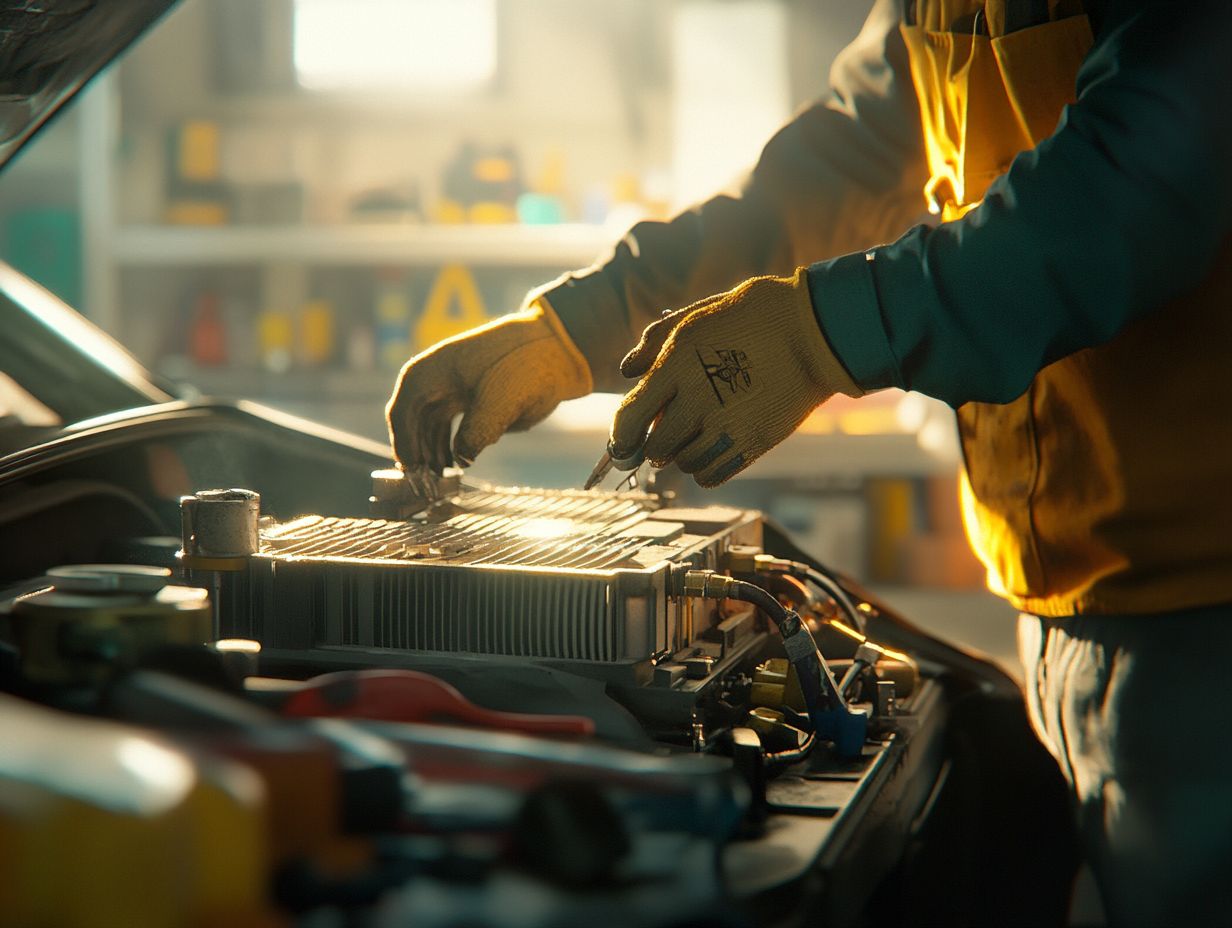
Identifying common cooling system issues is essential for maintaining your vehicle s performance. Problems like leaks and overheating can lead to severe damage.
Neglecting these problems can cause serious engine trouble or even a complete breakdown. Radiator leaks and water pump failures are common culprits that can drop coolant levels.
Regularly checking coolant levels is a must. Following good maintenance habits like flushing the system and inspecting hoses and clamps can reduce the likelihood of issues.
By staying proactive, you enhance your car’s longevity. This ensures a smoother and more enjoyable driving experience.
Maintaining Your Vehicle’s Cooling System
Maintaining your vehicle’s cooling system is vital for optimal engine temperature. This directly influences the overall efficiency of your vehicle.
Regular maintenance tasks include:
- Inspecting coolant levels
- Flushing the system
- Checking important parts such as the thermostat and radiator cap
Follow the manufacturer’s guidelines for maintenance frequency to avoid costly repairs. Seasonal checks before summer and winter will help guarantee smooth operation.
Regular Maintenance Tasks
Your vehicle’s cooling system requires regular maintenance, including checking coolant levels, flushing the system, and inspecting important parts. For more detailed information, see what to know about engine coolant maintenance.
Coolant levels must be adequate to keep your engine from overheating. Neglecting to flush the system can lead to rust and debris buildup.
Inspecting parts like temperature gauges and radiator caps can reveal leaks or faults. By following these practices, you boost your vehicle’s performance and efficiency.
When to Seek Professional Help
Knowing when to seek professional help is crucial. If you notice persistent overheating, it may signal serious underlying issues.
Visible leaks under your vehicle could indicate problems with the radiator or hose. Address these issues promptly to avoid further damage.
Consulting an expert is essential in these cases. They can diagnose problems accurately and resolve them before they escalate.
Preventing Cooling System Issues
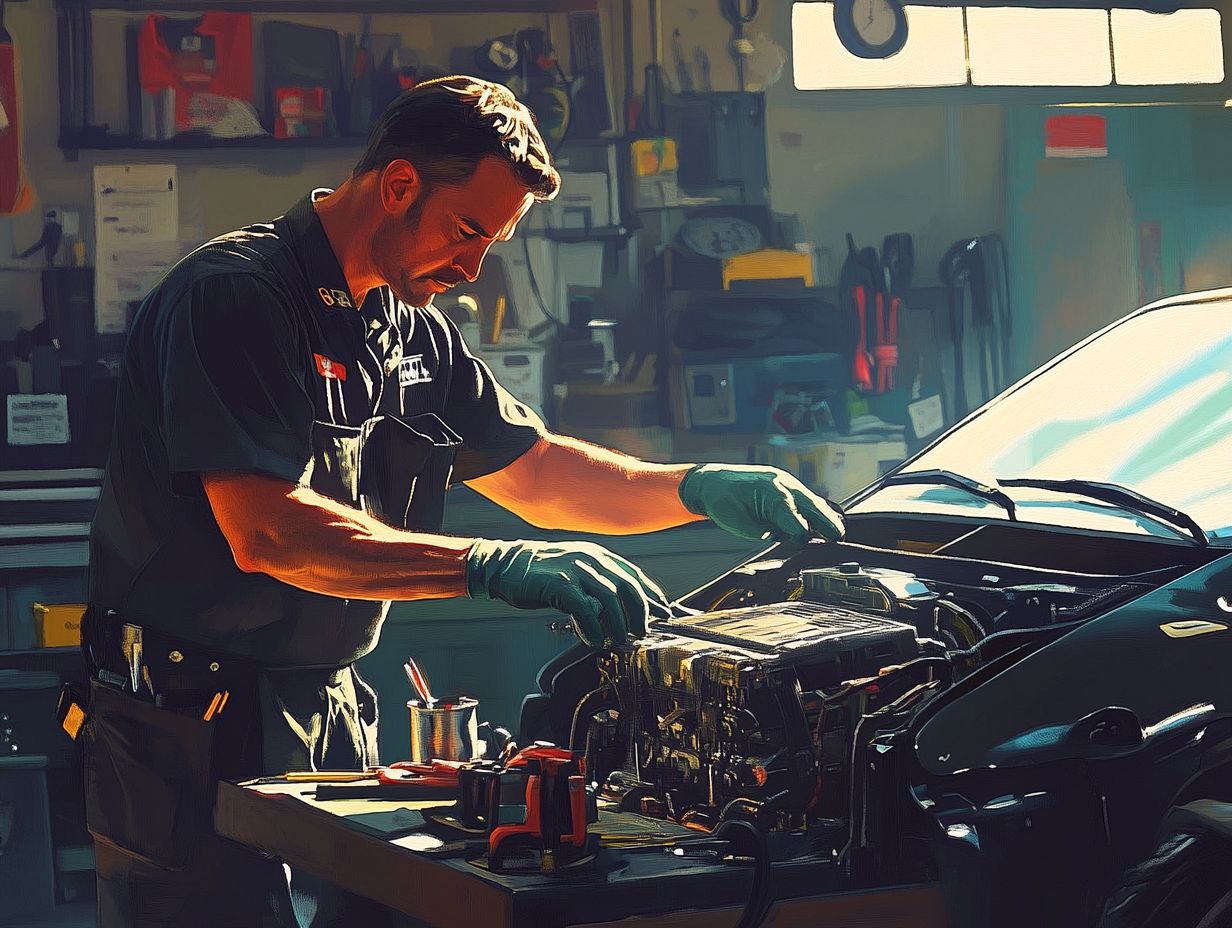
Preventing cooling system issues is key to maintaining your vehicle s performance. Regular maintenance practices can reduce the risk of overheating and leaks.
Monitoring coolant levels and inspecting key parts helps keep the cooling system functioning well. This safeguards you against accidents and costly repairs.
Tips for Keeping Your System in Top Shape
To keep your cooling system in prime condition, check your coolant levels regularly. Look for leaks and ensure all components work smoothly.
Monitor temperature gauges during your drives. This helps spot any fluctuations that may indicate problems.
In challenging conditions, adjust your driving habits to prevent overheating. For example, take breaks on long trips and avoid excessive idling.
Routine maintenance checks, like flushing the coolant system and replacing worn hoses, boost your cooling system’s efficiency. This ensures your vehicle runs reliably and lasts longer.
Frequently Asked Questions
What is a vehicle’s cooling system and why is it important to maintain?
A vehicle’s cooling system regulates the engine’s temperature and prevents overheating. Keeping it well-maintained avoids costly damages and breakdowns.
How often should I have my vehicle’s cooling system checked?
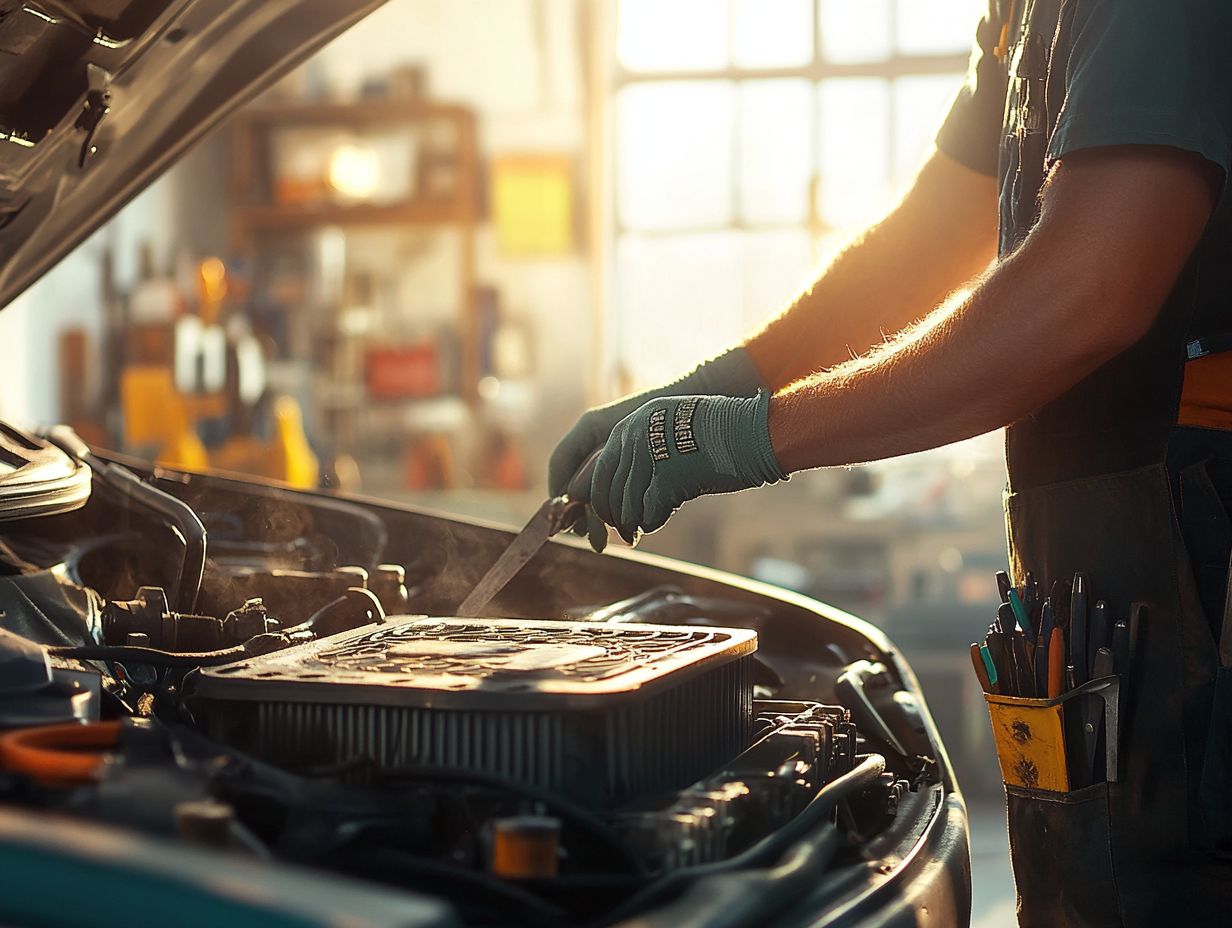
Check your cooling system at least once a year or every 12,000 miles. If you notice any coolant leaks or overheating, get it checked immediately!
What are some signs that indicate my vehicle’s cooling system needs maintenance?
- Coolant leaks
- Engine overheating
- Low coolant levels
- Strange noises from the engine
- A sweet smell inside the car
If you notice any of these, have your cooling system inspected by a professional right away!
Can I maintain my vehicle’s cooling system myself?
You can check coolant levels and top off coolant at home. However, for complex tasks like flushing and replacing coolant, it’s best to consult a professional.
What happens if I neglect my vehicle’s cooling system?
Neglecting your cooling system can lead to serious engine damage and costly repairs. An overheating engine can warp the cylinder head or engine block, affecting performance.
How can I prolong the life of my vehicle’s cooling system?
Regular maintenance is key! Check coolant levels and replace coolant as recommended. Also, have your cooling system inspected by a professional at least once a year.


